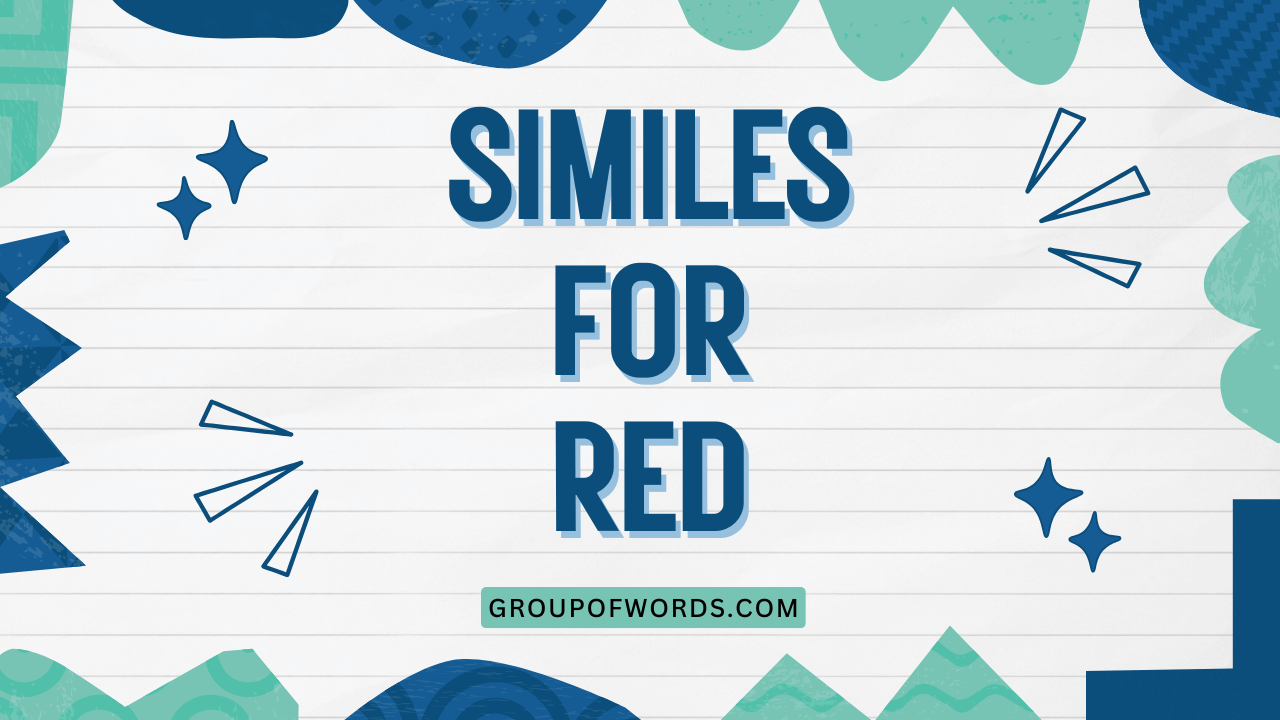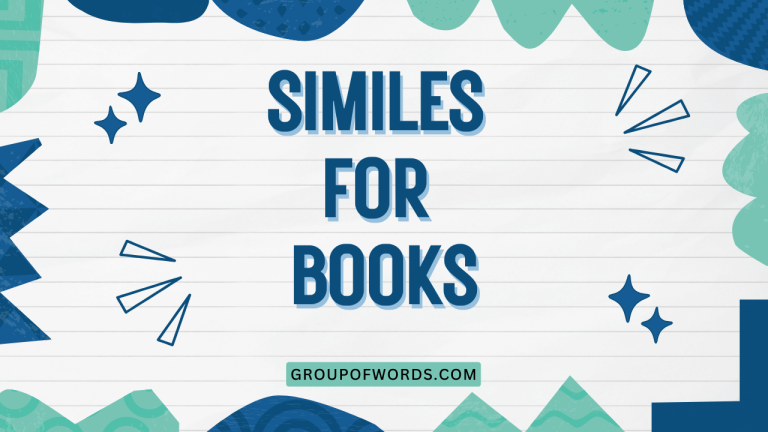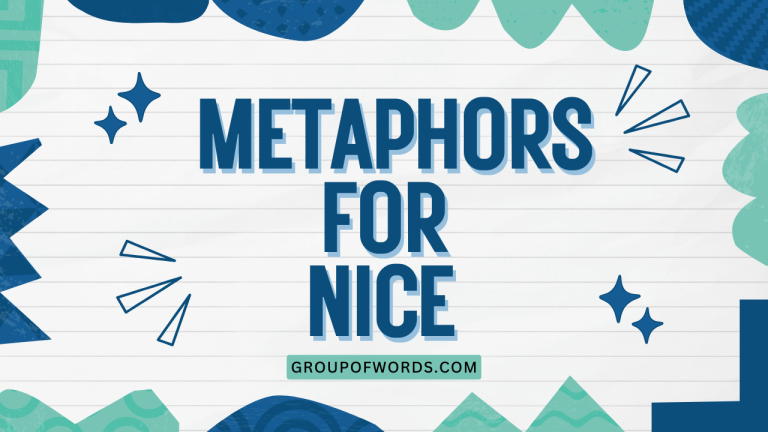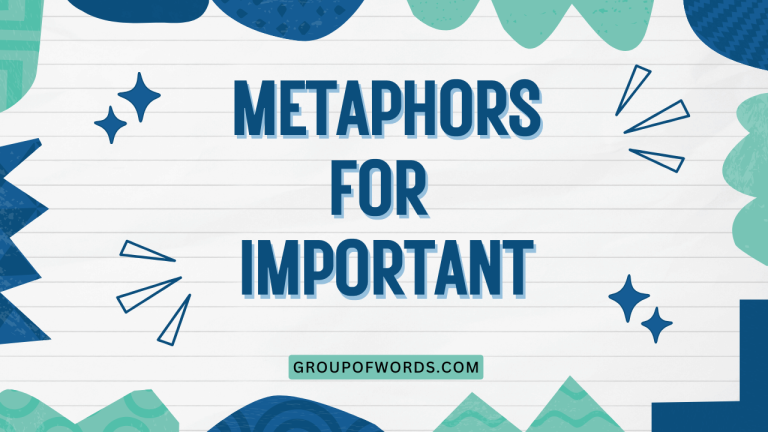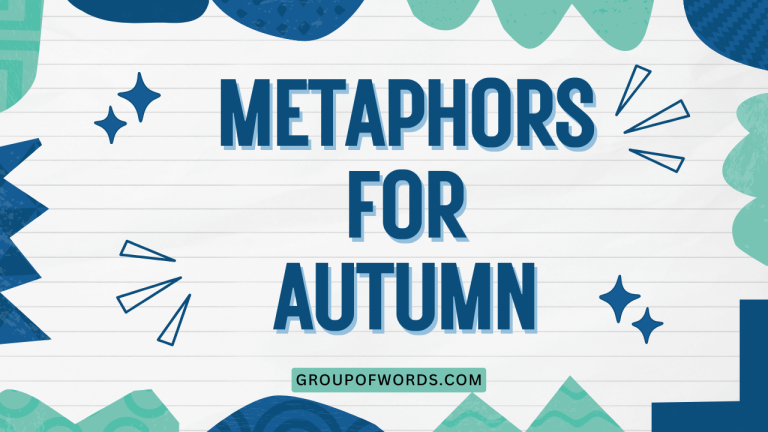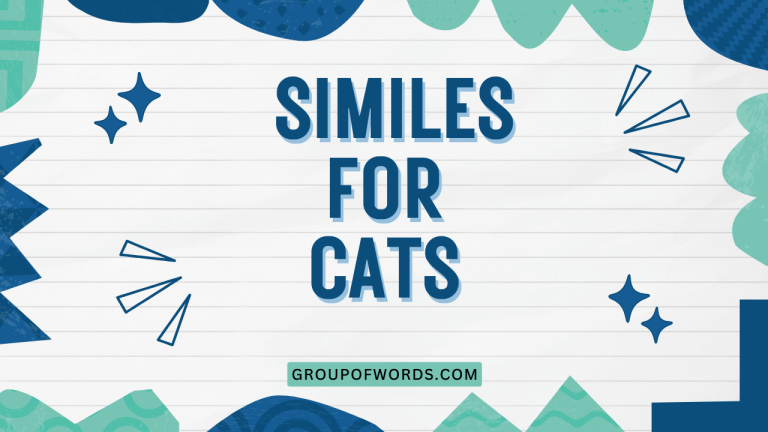Similes for Red: Enhancing Your Descriptive Language
Understanding and using similes effectively can significantly enrich your writing and speaking skills. Similes, a cornerstone of figurative language, allow us to draw vivid comparisons and paint memorable images in the minds of our audience.
Specifically, exploring similes that relate to the color red opens up a rich tapestry of associations, from passion and anger to danger and warmth. This article delves into the world of similes for “red,” providing definitions, examples, usage rules, and practice exercises to help you master this essential aspect of English grammar.
This guide is perfect for students, writers, and anyone looking to enhance their descriptive abilities and creative expression.
Table of Contents
- Introduction
- Definition of a Simile
- Structural Breakdown of Similes
- Types of Similes for Red
- Examples of Similes for Red
- Usage Rules for Similes
- Common Mistakes with Similes
- Practice Exercises
- Advanced Topics in Similes
- Frequently Asked Questions
- Conclusion
Definition of a Simile
A simile is a figure of speech that directly compares two different things using the words “like” or “as.” Its primary function is to create a more vivid and relatable image in the reader’s or listener’s mind. Similes are essential tools in descriptive writing, allowing authors to convey complex emotions, sensations, and ideas in a concise and impactful manner. They help bridge the gap between the unfamiliar and the familiar by drawing parallels that the audience can easily understand.
Similes are often used in literature, poetry, and everyday conversation to add color and depth to language. They can make writing more engaging and memorable by creating strong sensory impressions.
The effectiveness of a simile depends on the clarity and relevance of the comparison being made. A well-crafted simile can transform a mundane description into something extraordinary.
Structural Breakdown of Similes
The basic structure of a simile involves three key components: the subject being described, the linking word (“like” or “as”), and the object to which the subject is being compared. Understanding this structure is crucial for creating effective and grammatically correct similes.
The formula can be expressed as: Subject + Linking Word + Object. For example, in the simile “Her cheeks were as red as roses,” “her cheeks” is the subject, “as” is the linking word, and “roses” is the object of comparison. The object often carries a specific connotation or characteristic that is being attributed to the subject.
Let’s break down the elements further:
- Subject: The thing being described. This could be a person, object, place, or idea.
- Linking Word: Typically “like” or “as,” these words explicitly signal a comparison.
- Object: The thing to which the subject is being compared. It should share a relevant characteristic with the subject.
Types of Similes for Red
Similes for the color red can be categorized based on the associations and connotations that red evokes. These categories help to organize and understand the diverse ways in which red can be used in figurative language.
Here are some common types of similes for red:
Similes Related to Blood
These similes draw on the color of blood to convey ideas of injury, life, passion, or violence. They often have strong emotional impact.
Similes Related to Fire
Fire-related similes use the imagery of flames to suggest intensity, danger, warmth, or destruction. They can evoke a sense of power and energy.
Similes Related to Roses
Red roses are commonly associated with love, romance, and beauty. Similes using roses often convey feelings of affection and admiration.
Similes Related to Anger
The color red is often linked to anger and rage. Similes in this category express intense emotions and fury.
Similes Related to Sunsets
Sunsets can display a vibrant array of red hues, symbolizing beauty, tranquility, and the end of a cycle. Similes using sunsets can evoke feelings of peace and reflection.
Examples of Similes for Red
The following sections provide extensive examples of similes for red, organized by category. Each example is designed to illustrate the specific connotations and associations that red can evoke.
Similes Related to Blood
These similes often depict intense situations, from physical injury to deep emotional pain. The color of blood can symbolize life, death, passion, or sacrifice.
The table below offers a variety of similes using blood as a point of comparison. Note how each simile evokes a different emotional response.
| Simile | Explanation |
|---|---|
| His anger was as red as blood. | Implies intense, violent anger. |
| The sunset bled across the sky like blood. | Suggests a dramatic and perhaps ominous sunset. |
| Her cheeks flushed as red as blood. | Indicates strong emotion, possibly embarrassment or excitement. |
| The wound pulsed as red as blood. | Highlights the vivid color and vitality of the wound. |
| The stain spread like blood on the white cloth. | Creates a stark and unsettling image. |
| The poppy field was as red as blood spilled on the earth. | Evokes a sense of loss and sacrifice. |
| His eyes were bloodshot, as red as blood itself. | Suggests exhaustion or anger. |
| The juice from the berries stained his fingers as red as blood. | A more innocent, yet still vivid, comparison. |
| The warning light glowed as red as fresh blood. | Implies immediate danger. |
| The revolution painted the streets as red as blood. | Conveys violence and upheaval. |
| Her lips were painted as red as blood. | Suggests a bold and perhaps dangerous allure. |
| The rash spread across his skin, as red as blood under the surface. | Creates a disturbing image of sickness. |
| The cherries were as red as drops of blood. | A macabre but striking comparison. |
| The battlefield was as red as blood after the battle. | A grim reminder of the cost of war. |
| His face turned as red as blood when he realized his mistake. | Indicates intense embarrassment. |
| The velvet curtains were as red as dried blood. | Evokes a sense of age and decay. |
| The cardinal’s feathers were as red as vibrant blood. | Highlights the bird’s striking color. |
| The wine was as red as the finest blood. | Suggests richness and intensity. |
| The setting sun cast a glow on the snow, as red as blood. | Creates a dramatic scene. |
| The paint was the color of arterial blood, as red as blood shooting from a wound. | A very specific and visceral comparison. |
| His cheeks were as red as blood after running in the cold. | Indicates physical exertion. |
| The jam was as red as blood, thick and sweet. | A contrasting image of something pleasant being compared to blood. |
| The fire engine was painted as red as blood, to signify urgency. | Emphasizes the importance of the fire engine’s mission. |
| The ruby glowed as red as coagulated blood in the dim light. | A darker, more mysterious comparison. |
| The ink was as red as blood, a deliberate choice for the threatening message. | Indicates a sinister intent. |
Similes Related to Fire
Fire similes often convey heat, passion, intensity, and danger. They can evoke feelings of excitement, destruction, or transformation.
This table provides examples of similes that use fire as a point of comparison. Notice how the context influences the interpretation of each simile.
| Simile | Explanation |
|---|---|
| Her anger burned as red as fire. | Suggests intense, destructive anger. |
| The sunset blazed as red as fire across the horizon. | Implies a vibrant and dramatic sunset. |
| His face was as red as fire with embarrassment. | Indicates intense shame or humiliation. |
| The chili peppers were as red as fire and just as hot. | Highlights the intense heat of the peppers. |
| The lava flowed as red as fire down the volcano’s slope. | Creates a vivid image of destruction. |
| Her passion for the project burned as red as fire. | Conveys intense enthusiasm and dedication. |
| The dragon’s scales shimmered as red as fire in the sunlight. | Evokes a sense of power and danger. |
| The embers glowed as red as dying fire. | Suggests a fading passion or energy. |
| The warning flares burned as red as fire in the night. | Implies immediate danger or urgency. |
| His cheeks were as red as if they were kissed by fire. | Indicates a sunburn or intense heat exposure. |
| The maple leaves turned as red as fire in the autumn. | Captures the vibrant colors of fall. |
| The sports car was painted as red as fire, a symbol of speed. | Highlights the car’s thrilling performance. |
| Her eyes flashed as red as fire when she argued. | Suggests intense anger and determination. |
| The furnace glowed as red as fire, radiating intense heat. | Emphasizes the furnace’s heat output. |
| The dancer’s costume was as red as fire, a spectacle of energy. | Highlights the dancer’s vibrant and energetic performance. |
| The hot sauce was as red as fire, a warning of its potency. | Indicates the extreme spiciness of the sauce. |
| His temper flared as red as fire when provoked. | Suggests a sudden and intense outburst of anger. |
| The sunset’s reflection on the lake was as red as liquid fire. | Creates a dramatic and visually striking image. |
| The coals in the barbecue were glowing as red as fire, ready for cooking. | Indicates that the barbecue is ready for use. |
| The blacksmith heated the metal until it was as red as fire. | Highlights the extreme heat required for metalworking. |
| The nail polish was as red as fire, a bold and striking statement. | Emphasizes the boldness of the nail polish color. |
| Her heart burned as red as fire with love for him. | Conveys intense and passionate love. |
| The berries on the bush were as red as fire, a tempting but potentially poisonous sight. | Suggests a mixture of allure and danger. |
| The lipstick was as red as fire, drawing all eyes to her lips. | Highlights the allure and attention-grabbing effect of the lipstick. |
Similes Related to Roses
Similes involving red roses often symbolize love, beauty, romance, and passion. They can evoke feelings of tenderness, admiration, and affection.
The following table showcases similes that use red roses as a point of comparison. Note the romantic and affectionate connotations in each example.
| Simile | Explanation |
|---|---|
| Her cheeks were as red as roses in the spring. | Indicates a healthy and attractive flush. |
| The dress was as red as a rose, a symbol of love. | Emphasizes the romantic symbolism of the dress. |
| Her lips were as red as rose petals, soft and inviting. | Suggests beauty and tenderness. |
| The sunset was as red as a field of roses. | Creates a beautiful and romantic image. |
| The wine was as red as a rose, rich and full-bodied. | Highlights the wine’s color and quality. |
| Her love was as red as a rose, pure and passionate. | Conveys intense and genuine affection. |
| The blush on her face was as red as a rose in bloom. | Indicates shyness or embarrassment. |
| The cushion was as red as a rose, adding a touch of elegance | Emphasizes the beauty of the cushion. |
| The stain on the tablecloth as red as a rose. | The stain is being compared to a rose. |
| The ruby was as red as a rose, the perfect gift for a queen. | Emphasizes the beauty of the ruby. |
| Her shawl was as red as a rose, a bold fashion statement. | Emphasizes the beauty of the shawl. |
| The ribbon on the gift was as red as a rose, the perfect touch. | Emphasizes the beauty of the ribbon. |
| The tomatoes were as red as roses, a summer delight. | Emphasizes the beauty of the tomatoes. |
| Her hair was as red as roses, the perfect touch for her beauty. | Emphasizes the beauty of the hair. |
| The sunset was as red as roses, the perfect ending to the day. | Emphasizes the beauty of the sunset. |
| The blanket was as red as roses, the perfect touch for the room. | Emphasizes the beauty of the blanket. |
| The painting was as red as roses, the perfect touch for the wall. | Emphasizes the beauty of the painting. |
| The rug was as red as roses, the perfect touch for the house. | Emphasizes the beauty of the rug. |
| The velvet was as red as roses, the perfect touch for the dress. | Emphasizes the beauty of the velvet. |
| The curtain was as red as roses, the perfect touch for the house. | Emphasizes the beauty of the curtain. |
| The light was as red as roses, the perfect touch for the room. | Emphasizes the beauty of the light. |
| The car was as red as roses, the perfect touch for the man. | Emphasizes the beauty of the car. |
| The sky was as red as roses, the perfect touch for the day. | Emphasizes the beauty of the sky. |
| The sunset was as red as roses, the perfect touch for the day. | Emphasizes the beauty of the sunset. |
Similes Related to Anger
Red is often associated with intense emotions like anger, rage, and fury. These similes capture the heat and intensity of such feelings.
This table provides similes that use red to describe anger. Note how each simile conveys a sense of intense emotion.
| Simile | Explanation |
|---|---|
| His face turned as red as a beet with anger. | Indicates intense frustration. |
| Her rage was as red as a volcano erupting. | Suggests explosive and uncontrollable anger. |
| His temper flared as red as a warning sign. | Implies a sudden and dangerous outburst. |
| Her fury burned as red as hot coals. | Conveys a deep and smoldering anger. |
| His voice grew as red as a shout, filled with anger. | Highlights the intensity of his anger. |
| The argument escalated, turning as red as a heated debate. | Indicates the growing intensity of the argument. |
| His frustration boiled as red as a simmering pot. | Suggests a building and potentially explosive anger. |
| Her cheeks flushed as red as a flag of war when challenged. | Indicates a defensive and aggressive response. |
| His words were as red as a slap in the face, filled with venom. | Conveys the harshness and cruelty of his words. |
| Her glare was as red as a stop sign, warning him to back off. | Implies a clear and forceful warning. |
| His anger was as red as a fire alarm, signaling an emergency. | Indicates a crisis situation. |
| Her face was as red as a tomato with fury. | Indicates intense frustration. |
| His face was as red as a lobster with fury. | Indicates intense frustration. |
| His face was as red as a devil with fury. | Indicates intense frustration. |
| His face was as red as a dragon with fury. | Indicates intense frustration. |
| His face was as red as a hot pan with fury. | Indicates intense frustration. |
| His face was as red as a coal with fury. | Indicates intense frustration. |
| His face was as red as a burning house with fury. | Indicates intense frustration. |
| His face was as red as a hell with fury. | Indicates intense frustration. |
| His face was as red as a firestorm with fury. | Indicates intense frustration. |
| His face was as red as a hot iron with fury. | Indicates intense frustration. |
| His face was as red as a furnace with fury. | Indicates intense frustration. |
| His face was as red as a hot oven with fury. | Indicates intense frustration. |
| His face was as red as a boiling pot with fury. | Indicates intense frustration. |
Similes Related to Sunsets
Sunsets, with their vibrant red hues, often symbolize beauty, tranquility, and the end of a cycle. These similes evoke feelings of peace, reflection, and awe.
This table provides similes that use red sunsets as a point of comparison. Note the serene and beautiful imagery in each example.
| Simile | Explanation |
|---|---|
| The sky was as red as a sunset over the ocean. | Creates a serene and beautiful image. |
| The clouds glowed as red as a sunset’s embrace. | Suggests warmth and comfort. |
| The evening sky was as red as a sunset’s farewell. | Conveys a sense of closure and peace. |
| The horizon blazed as red as a sunset’s fire. | Implies a vibrant and dramatic display. |
| The lake reflected the sky, as red as a double sunset. | Enhances the beauty and intensity of the scene. |
| The sky was as red as a sunset in Hawaii. | Creates a serene and beautiful image. |
| The clouds glowed as red as a sunset in Vegas. | Suggests warmth and comfort. |
| The evening sky was as red as a sunset in New York. | Conveys a sense of closure and peace. |
| The horizon blazed as red as a sunset in Paris. | Implies a vibrant and dramatic display. |
| The lake reflected the sky, as red as a double sunset in Rome. | Enhances the beauty and intensity of the scene. |
| The sky was as red as a sunset on mars. | Creates a serene and beautiful image. |
| The clouds glowed as red as a sunset on Jupiter. | Suggests warmth and comfort. |
| The evening sky was as red as a sunset on Saturn. | Conveys a sense of closure and peace. |
| The horizon blazed as red as a sunset on Uranus. | Implies a vibrant and dramatic display. |
| The lake reflected the sky, as red as a double sunset on Neptune. | Enhances the beauty and intensity of the scene. |
| The sky was as red as a sunset in China. | Creates a serene and beautiful image. |
| The clouds glowed as red as a sunset in Japan. | Suggests warmth and comfort. |
| The evening sky was as red as a sunset in Korea. | Conveys a sense of closure and peace. |
| The horizon blazed as red as a sunset in Thailand. | Implies a vibrant and dramatic display. |
| The lake reflected the sky, as red as a double sunset in Vietnam. | Enhances the beauty and intensity of the scene. |
| The sky was as red as a sunset in the desert. | Creates a serene and beautiful image. |
| The clouds glowed as red as a sunset in the mountains. | Suggests warmth and comfort. |
| The evening sky was as red as a sunset in the forest. | Conveys a sense of closure and peace. |
| The horizon blazed as red as a sunset in the jungle. | Implies a vibrant and dramatic display. |
| The lake reflected the sky, as red as a double sunset in the city. | Enhances the beauty and intensity of the scene. |
Usage Rules for Similes
Using similes effectively requires adherence to certain grammatical rules and stylistic considerations. Here are some key rules to keep in mind:
- Clarity: The comparison should be clear and easily understood by the audience. Avoid obscure or confusing references.
- Relevance: The object of comparison should share a relevant characteristic with the subject being described.
- Originality: While common similes can be effective, strive for originality to make your writing more engaging and memorable.
- Grammatical Correctness: Ensure that the simile is grammatically sound. The subject and object should be properly connected by “like” or “as.”
- Context: The simile should be appropriate for the context in which it is used. Consider the tone and audience of your writing.
Exceptions: In creative writing, some authors may intentionally bend or break these rules for stylistic effect. However, it’s important to have a solid understanding of the rules before attempting to deviate from them.
Common Mistakes with Similes
Learners often make common mistakes when using similes. Recognizing these errors can help you improve your writing and speaking skills.
Here are some frequent errors and how to correct them:
| Incorrect | Correct | Explanation |
|---|---|---|
| His anger was red. | His anger was as red as fire. | The first sentence is a statement, not a comparison. The second sentence uses “as” to create a simile. |
| She was like a rose. | She was as beautiful as a rose. | The comparison needs to be specific. “Like a rose” is too vague. |
| The sunset was red like. | The sunset was red like blood. | Missing object of comparison. |
| He ran as fast. | He ran as fast as a cheetah. | Missing object of comparison. |
| Her face was red as. | Her face was as red as a tomato. | Missing object of comparison. |
Practice Exercises
Test your understanding of similes with the following exercises. Identify the similes in each sentence and explain their meaning.
Then, create your own similes using the given prompts.
Exercise 1: Identifying Similes
| Question | Answer |
|---|---|
| 1. Her eyes were as red as rubies. | Simile: “as red as rubies.” Meaning: Her eyes were a deep, vibrant red color. |
| 2. The lava flowed like a river of red fire. | Simile: “like a river of red fire.” Meaning: The lava was flowing with intensity and heat. |
| 3. His anger was as red as a burning flame. | Simile: “as red as a burning flame.” Meaning: His anger was intense and destructive. |
| 4. The poppy field was as red as a sea of blood. | Simile: “as red as a sea of blood.” Meaning: The field was a vast expanse of red, evoking a sense of loss or sacrifice. |
| 5. Her dress was as red as a blooming rose. | Simile: “as red as a blooming rose.” Meaning: Her dress was a beautiful and vibrant red color. |
| 6. The car zoomed by as red as a racecar. | Simile: “as red as a racecar.” Meaning: The car was a vibrant red color. |
| 7. The wine was as red as a glass of blood. | Simile: “as red as a glass of blood.” Meaning: The wine was a deep, vibrant red color. |
| 8. The warning light was as red as danger. | Simile: “as red as danger.” Meaning: The light was a vibrant red color. |
| 9. The face of the man was as red as a tomato. | Simile: “as red as a tomato.” Meaning: The face of the man was a vibrant red color. |
| 10. The house was as red as a firehouse. | Simile: “as red as a firehouse.” Meaning: The house was a vibrant red color. |
Exercise 2: Creating Similes
Complete the following sentences by adding a simile using “like” or “as.”
| Question | Answer |
|---|---|
| 1. The sunset was as red as ____. | The sunset was as red as a fiery painting. |
| 2. His face turned as red as ____ when he was embarrassed. | His face turned as red as a beet when he was embarrassed. |
| 3. The chili peppers were as red as ____. | The chili peppers were as red as burning embers. |
| 4. Her anger burned as red as ____. | Her anger burned as red as a scorching flame. |
| 5. The ruby glowed as red as ____. | The ruby glowed as red as a drop of dragon’s blood. |
| 6. The car zoomed by as red as ____. | The car zoomed by as red as a racecar on fire. |
| 7. The wine was as red as ____. | The wine was as red as a glass of ruby. |
| 8. The warning light was as red as ____. | The warning light was as red as a stop sign. |
| 9. The face of the man was as red as ____. | The face of the man was as red as a tomato in the sun. |
| 10. The house was as red as ____. | The house was as red as a firehouse in the city. |
Advanced Topics in Similes
For advanced learners, exploring more nuanced aspects of similes can further enhance their understanding and usage. This includes examining the use of extended similes, mixed metaphors, and the cultural context of similes.
Extended Similes: These are longer, more complex similes that extend over several lines or even paragraphs. They provide a more detailed and elaborate comparison.
Mixed Metaphors: While technically different from similes, mixed metaphors can sometimes overlap with similes. A mixed metaphor combines two or more incompatible metaphors, often creating a humorous or nonsensical effect.
Cultural Context: The effectiveness of a simile can depend on the cultural background of the audience. Some comparisons may resonate more strongly with certain cultures than others.
Frequently Asked Questions
Here are some common questions about similes:
- What is the difference between a simile and a metaphor?
A simile uses “like” or “as” to make a direct comparison, while a metaphor implies a comparison without using these words. For example, “He is like a lion” (simile) vs. “He is a lion” (metaphor).
- Can a simile be a cliché?
Yes, some similes are overused and have become clichés. It’s best to strive for originality to make your writing more engaging.
- How can I make my similes more effective?
Focus on clarity, relevance, and originality. Choose objects of comparison that are easily understood and share a relevant characteristic with the subject being described.
- Are similes only used in writing?
No, similes are also commonly used in everyday speech to add color and emphasis to language.
- Why is it important to use similes in writing?
Similes enhance descriptive writing, making it more vivid, engaging, and memorable. They help readers visualize and understand complex ideas.
- How do I avoid using clichéd similes?
Think outside the box and brainstorm unique comparisons. Try to find less obvious and more creative ways to describe things.
- Can I use a simile to describe an abstract concept?
Yes, you can use similes to make abstract concepts more relatable by comparing them to concrete things. For example, “Love is like a warm blanket on a cold day.”
- How do I make sure my simile makes sense to my audience?
Consider your audience’s background and knowledge when choosing your object of comparison. Ensure that the comparison is relevant and easily understood by your intended readers or listeners.
Conclusion
Mastering the use of similes can significantly enhance your writing and communication skills. By understanding the structure, types, and usage rules of similes, you can create vivid and memorable descriptions that engage your audience.
Whether you’re describing the color red or any other subject, the key is to focus on clarity, relevance, and originality. Practice regularly, and don’t be afraid to experiment with different comparisons to find what works best for you.
With dedication and creativity, you can harness the power of similes to bring your words to life.
